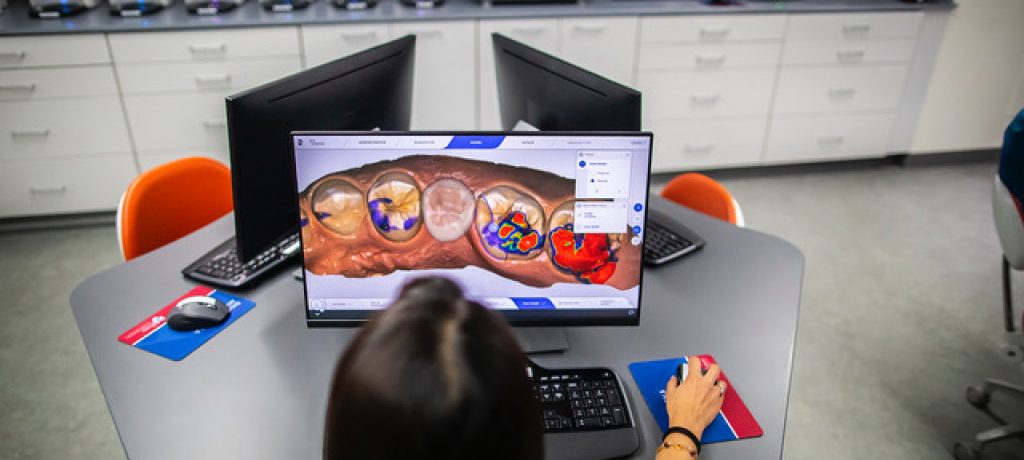Information Library
Start Reading

An article published in the International Journal of Dentistry aptly quotes “Today, the digital revolution is changing the workflow and consequently changing operating procedures.” The story went on to highlight the areas of:
 But, what does this mean for you as a dental patient?
But, what does this mean for you as a dental patient?
In addition to enabling dentists to practice the latest approaches in dentistry, dental technology helps provide patients with higher standards of quality, comfort, and more.
To share more about the innovative and exciting ways Penn Dental Medicine has and continues to be at the forefront of the latest trends in dental technology, we sit down with Julian Conejo, assistant professor of clinical restorative dentistry, and director of chairside CAD/CAM medication for Penn Dental Medicine.
Many patients at PDM often ask:
What is the latest dental technology? How is it used?
Examples of dental technology that we routinely use here at Penn include:
Intraoral scanners and milling machines are useful in many areas of dentistry, but particularly in restorative dentistry. At Penn Dental Medicine the digital dental lab utilizes a sophisticated CAD/CAM milling machine.
“CAD/CAM means “computer-aided design, computer-aided manufacturing,” Conejo explains. “We can use CAD/CAM to make intraoral scans if the patient needs a veneer or a crown. We can scan it quickly, design it in the software, and then put a block of ceramic or any material that we want and mill it.”
This means that rather than having to wait days (or even weeks) a veneer or crown can be made in specific, targeted colors, with the CAD/CAM milling process—only taking around 10 minutes to complete!
 “Instead of the patient needing to come back twice for the same procedure we can deliver same-day ceramic restorations,” Conejo says.
“Instead of the patient needing to come back twice for the same procedure we can deliver same-day ceramic restorations,” Conejo says.
This form of dental technology saves time for both dentists and patients; an efficiency that was just beginning a mere decade or so ago.
In his role with Penn Dental Medicine’s digital dental laboratory, Conejo says that digital dentistry provides the “high-quality information needed to optimize treatment planning.”
As a result, patient benefits of dental technology include:
 “By seeing my patient and making an intraoral scan and a 3D image of the hard structures—the bone with the Cone-beam computed tomography (CBCT)—and merging those files together, I then have all that information in my computer,” Conejo says. “This means I can start treatment planning, integrating facial scans, intraoral photos, and extraoral photos—even if the patient isn’t present.”
“By seeing my patient and making an intraoral scan and a 3D image of the hard structures—the bone with the Cone-beam computed tomography (CBCT)—and merging those files together, I then have all that information in my computer,” Conejo says. “This means I can start treatment planning, integrating facial scans, intraoral photos, and extraoral photos—even if the patient isn’t present.”
Because Penn Dental Medicine is a teaching practice closely linked with the University of Pennsylvania School of Dental Medicine, patients receive the latest approaches in dentistry from student dentist guided by industry-leading faculty members. Together, these established and future dentists utilize state-of-the-art equipment and technology embedded in evidence-based research. The result: high-quality dental services and top patient-centered care.
To learn more about the PDM digital dental lab, click here. Or, call the PDM office at 215-898-8965 to schedule an appointment.